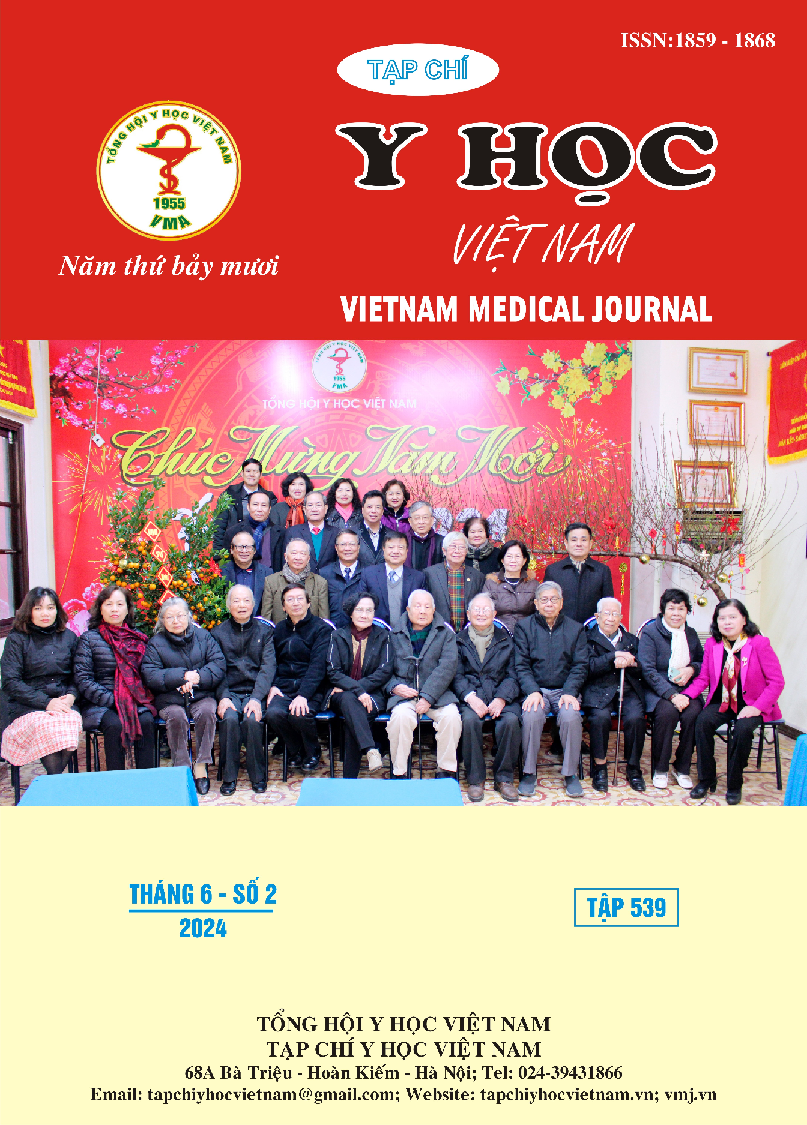QUATIFICATION OF APPARENT DIFFUSION COEFFICIENT HISTOGRAM FOR DIFFERENTING BENIGN AND MALIGNANT TESTICULAR MASSES
Main Article Content
Abstract
apparent diffusion coefficient (ADC) histogram in distinguishing benign and malignant testicular masses using the Volume-Of-Interest (VOI) method applied to the entire tumor volume. Materials and Methods: A retrospective study involving 40 testicular masses imaged with contrast-enhanced MRI of the scrotal region. Surgical intervention was performed, resulting in 7 benign and 33 malignant masses. ADC histogram indices (mean, median, maximum, minimum, kurtosis, skewness, entropy, StDev, mpp, upp) were measured using the VOI method applied to the entire tumor volume, and a comparison was made between benign and malignant testicular masses. Results: The mean age of the malignant group was 35.67 ± 10.56, higher than the benign group's 24.57 ± 11.0 (p<0.05). The ADC max, ADC skewness, ADC entropy, and ADC variance values in the benign group were lower than those in the malignant group, while ADC min and ADC uniformity values were higher (p<0.05). Using the VOI method on the entire tumor volume, ADC max, ADC variance, and ADC skewness proved to be reliable in distinguishing benign and malignant testicular masses with cutoff values (Sp, Se, AUC) of 1846.0 (75.8; 100; 0.905), 39198.39 (81.8; 85.7; 0.887), and 0.893 (57.6; 100; 0.797), respectively. Conclusion: ADC histogram with the VOI method applied to the entire tumor volume plays a crucial role in the differential diagnosis of benign and malignant testicular masses
Article Details
Keywords
testicular masses, magnetic resonance imaging, diffusion-weighted imaging, apparent diffusion coefficient histogram
References
2. Wang W, Sun Z, Chen Y, et al. Testicular tumors: discriminative value of conventional MRI and diffusion weighted imaging. Medicine. 2021;100(48):e27799. doi:10.1097/MD.0000000000027799
3. Khan O, Protheroe A. Testis cancer. Postgraduate Medical Journal. 2007;83(984):624-632. doi:10.1136/pgmj.2007.057992
4. Liu R, Lei Z, Li A, Jiang Y, Ji J. Differentiation of testicular seminoma and nonseminomatous germ cell tumor on magnetic resonance imaging. Medicine (Baltimore). 2019;98(45):e17937. doi: 10.1097/MD.0000000000017937
5. Tsili AC, Sofikitis N, Pappa O, Bougia CK, Argyropoulou MI. An Overview of the Role of Multiparametric MRI in the Investigation of Testicular Tumors. Cancers (Basel). 2022;14(16):3912. doi:10.3390/cancers14163912
6. Pedersen MRV, Loft MK, Dam C, Rasmussen LÆL, Timm S. Diffusion-Weighted MRI in Patients with Testicular Tumors-Intra- and Interobserver Variability. Curr Oncol. 2022; 29(2): 837-847. doi:10.3390/curroncol29020071
7. Tsili AC, Sofikitis N, Stiliara E, Argyropoulou MI. MRI of testicular malignancies. Abdom Radiol. 2019; 44(3):1070-1082. doi:10.1007/s00261-018-1816-5
8. Tsili AC, Ntorkou A, Astrakas L, et al. Diffusion-weighted magnetic resonance imaging in the characterization of testicular germ cell neoplasms: Effect of ROI methods on apparent diffusion coefficient values and interobserver variability. European Journal of Radiology. 2017;89:1-6. doi:10.1016/j.ejrad.2017.01.017
9. Lambregts DMJ, Beets GL, Maas M, et al. Tumour ADC measurements in rectal cancer: effect of ROI methods on ADC values and interobserver variability. Eur Radiol. 2011; 21(12): 2567-2574. doi: 10.1007/ s00330-011-2220-5
10. Min X, Feng Z, Wang L, et al. Characterization of testicular germ cell tumors: Whole-lesion histogram analysis of the apparent diffusion coefficient at 3T. European Journal of Radiology. 2018;98:25-31. doi:10.1016/j.ejrad.2017.10.030


